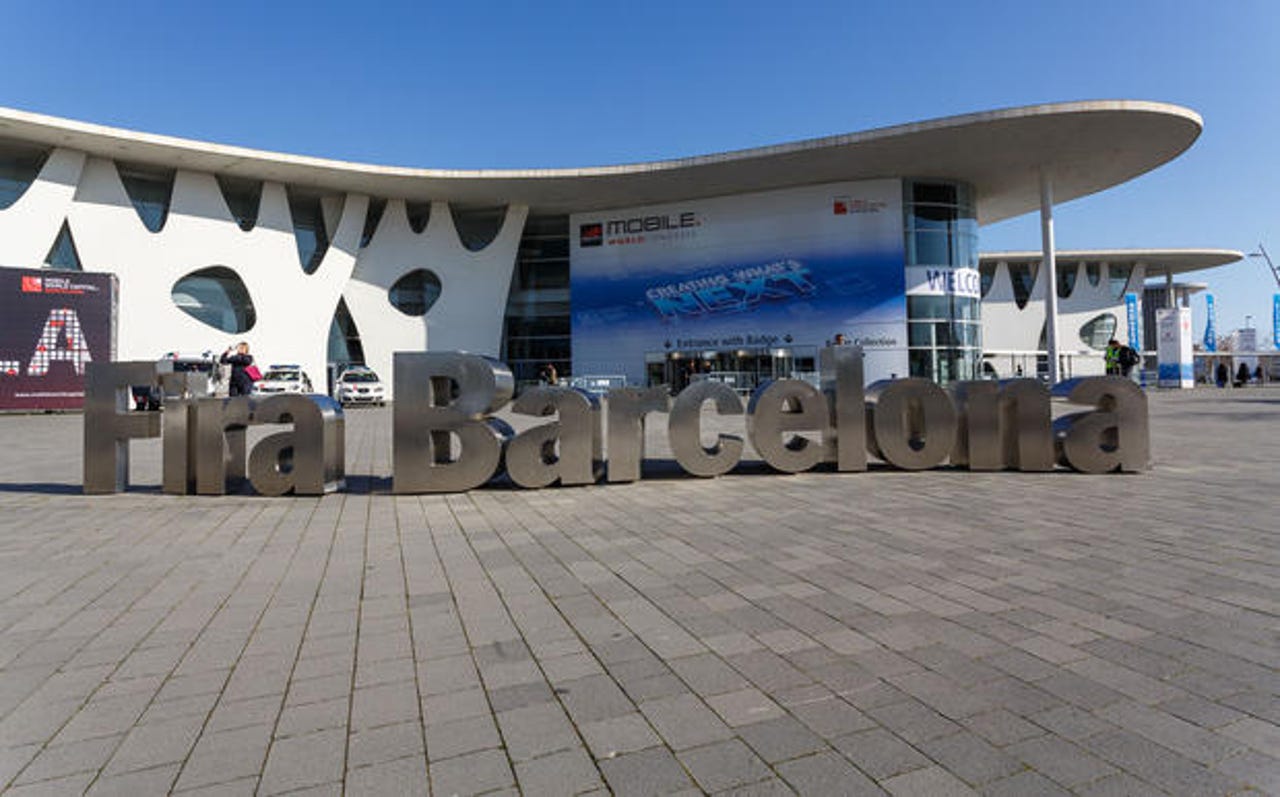35,000 sandwiches, hundreds of hotspots: An inside look at what it takes to keep MWC running

The show, known as the one must-attend event in the mobile calendar, will see over 100,000 square meters of exhibition space filled with representatives from more than 2,000 companies - including 167 Spanish firms. Some 90,000 people from 201 countries are expected to descend on the show, which is estimated to have a total economic impact of €436m, employing more than 12,000 temporary workers.
Behind the scenes, before the new flagships are unveiled, competing business models discussed, and mobile's hitherto unimaginable future shaped, MWC is an event planned and finely tuned to the last detail.
The staging of the congress, which formally starts in Barcelona on March 2, quietly began on February 18 with all the necessary security measures put in place to keep any information about those new products launches from leaking out. More than 10,000 people have been involved in the preparations for the event, including contractors, staff from the evens site the Fira de Barcelona, and drivers of the 1,800 trailer trucks carrying all kinds of sales collateral.
Everything is calculated - in some cases, down to the millimetre. "A company whose name we don't want to disclose reproduces its CEO's office exactly so that he can work comfortably at the conference," a spokesperson for the Fira de Barcelona said.
Mobile world congress 2016
The recreation of the CEO's office will be a tiny slice of MWC's overall exhibition space, 100,000 square meters spread over two venues: Hall 8 of Montjuic Palace, built for the Universal Exhibition of 1929 and the Gran Vía, designed by Japanese architect Toyo Ito, with eight pavilions (equivalent to 40 football fields), 29 conference rooms and 12km of underground tunnels, ensuring there are no technical hitches in running the Congress.
To wi-fi or not to wi-fi
Still, complaints about internet access have become one of the constants of MWC. It's a paradox that's noticed year after year: how can it be so complicated to provide a wireless connection in a show dedicated to wireless connectivity?
Means aren't the problem. The wi-fi network deployed with Cisco, is one of the largest in the world, customised for the Fira's space and those who'll need to get online.
"We split the service into two parts: the network for exhibitors and the network for visitors," says Xavi Michavila, ICT manager at Fira de Barcelona. "The first is designed to meet the needs of businesses, given that most of them perform shows throughout the conference. The second is for visitors and is structured around open access hotspots." Both incorporate a high level of security with encryption and various protocols in place to prevent data loss or theft.
However, as with all wi-fi networks, the Fira's faces two technological limitations: user density and interference. "These two parameters are a challenge," says Michavila. To mitigate the problems, Fira de Barcelona has 975 access points in Gran Via. In addition, it's adopted upgrades suggested by Cisco. In 2014, the MWC wi-fi service had to keep up with more than 20,000 devices connected simultaneously. This year, the conference expects even more connections.
With regard to interference, Michavila emphasizes the attempt to coordinate the needs of each exhibitor and make sure they use the best band channel available. "Nobody wants to have interference during demos," Fira de Barcelona's ICT manager says.
The largest exhibitors this year are Ericsson, Nokia, Huawei, Sony, Samsung, Microsoft, Qualcomm, Facebook, Intel, and ZTE. Meeting their requirements will be a challenge for the Fira de Barcelona's IT staff - and just one more in a list that includes handling accreditations, access to the venues, or the official app of the congress, which is also developed by Fira de Barcelona. "Everything is important," concludes Michavila.
Food for thought
In addition to new handsets, other key themes for MWC this year will be Internet of Things (IoT) and wearables, as well as the growing trend towards mobile payments.
MWC may have been running for over a decade, but the mobile industry's still in rude health. In April 2014, there were seven billion mobile connections in the world (two billion broadband connections) and the GSMA Intelligence Unit estimated that in February 2015 that figure will hit 7.4 billion, meaning that there are now more mobile connections than inhabitants (about 7.2 billion according to the UN) of the planet.
The GSMA will provide more data on the sector on the first day of the Congress when it releases the Mobile Economy report. Their forecasts suggest that by 2020 the mobile sector will generate 5.1 percent of global GDP and the number of connections will exceed nine billion. That said, it seems not surprising that Shaun Collin, analyst and founder of CCS Insight, said that "spectrum will become more valuable than oil".
Contemplating the future of mobility shouldn't be attempted on an empty stomach. With this in mind, MWC has 20 catering providers working 24 hours a day for four days before the event and plans to serve up to 18 tons of food during the event, all of it properly labelled with the appropriate allergen information.
Sandwiches are what keeps MWC functioning, it seems. About 35,000 of them are sold each day during the congress, although the consumption of bagels, burritos, and pizza increased last year. About 50,000 coffees and 28,000 freshly-prepared pastries are also served every day during the event. Just for the record, mobile's movers and shakers prefer homemade cakes to than croissants. In addition, they have the opportunity to print their brand on the food. Branding, like the mobile industry, never rests. Be prepared.
Read more on MWC
